Polluted runoff is bad. Green stormwater infrastructure is good. But as rain gardens proliferate like frogs after a rainstorm and development continues to creep across the landscape, it’s time to flesh out those generalities with solid data. And stormwater folks in Washington state are poised to do just that with a new stormwater monitoring program.
“We have completely changed the paradigm for Clean Water Act permit monitoring,” said Karen Dinicola, the state Ecology Department staff lead for the project, called the Puget Sound Ecosystem Monitoring Program Stormwater Work Group.
Since 2007, Dinicola has worked with representatives from local cities and counties, state and federal agencies, tribes, business groups, and environmental organizations to develop the program. They’ve held more than 50 stakeholder meetings and three big public workshops.
The tremendous amount of work and commitment was needed to meet the scope of the challenge.
Polluted stormwater runoff is the biggest threat to the health of Puget Sound and other Northwest lakes, rivers, and bays. Municipalities, businesses, and others are spending millions of dollars trying to curb the gush of runoff that follows a rainstorm. And while lab research and studies of individual green installations help experts figure out what’s working, more widespread testing is needed to find the best solutions to the stormwater threat. That’s where the monitoring program comes in.
“It is providing critical management information,” Dinicola said. “You can’t change what you are doing if you can’t see what is working when, where, and why.”
Building consensus, pooling resources
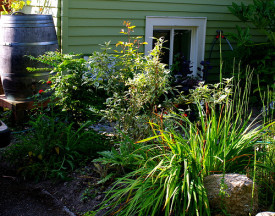
Pollution monitoring is nothing new to Puget Sound. The Department of Health monitors for bacteria that taint shellfish. The Department of Fish and Wildlife test for industrial chemicals in salmon and sole. Ecology does its own tests of waterways large and small. And Washington’s larger cities and counties have been doing stormwater monitoring as a permit requirement—monitoring that’s expensive, hard to implement, and has produced results of limited value.
Under the National Pollution Discharge Elimination System (NPDES) stormwater permits that went into effect last summer, more than 90 Western Washington cities, counties, and ports are on the hook for pollution monitoring.
With the expanded monitoring requirements, local leaders and officials wanted a program that would actually provide meaningful information—not just a box they could check to meet a legal obligation.
What we were really trying to get at was a program that collected data that could all fit together to tell a larger story, said Jim Simmonds, King County’s supervisor of Water Quality and Quantity unit.
“We wanted a coordinated program that together tells a better story and is done in the most efficient manner possible,” he said.
In 2007, an exploratory committee studied 17 estuary monitoring programs from around the nation to learn about what was working and what wasn’t.
The next year, the state pulled together a diverse group of stakeholders to form the Stormwater Work Group, which Simmonds is now the chair of.
The effort wasn’t an instant success.
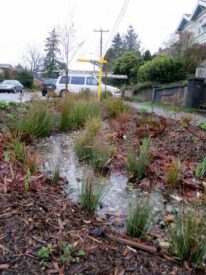
“There was a tremendous amount of skepticism among all participants that we would be able to agree on something, myself included,” Simmonds said. The group included local government officials, state and federal regulators, green organizations, and business interests.
Participants doubted Ecology would listen to their suggestions, so they didn’t give many. Dinicola made clear that everyone would be heard and put a premium on building consensus for the group’s recommendations. The cities and counties began accepting the fact that they had to do monitoring—and that the current approach was expensive and not very useful.
The stakeholders began engaging. They divided into subcommittees to tackle specific issues in more detail. They also periodically held large public meetings to capture a wider range of opinions.
They settled on two foundational ideas:
- The program needed to have independent funding that did not rely on state budgets. In the past, monitoring programs had started strong, gotten good results, then lost funding. To avoid this pitfall, the municipalities decided they’d pay dues to finance the effort.
- The program would hire contractors, often other agencies, to do the monitoring. That saves money by pooling their resources and creating uniform, comparable results. But cities and counties kept the option of doing their own research if they preferred.
Programs in Southern California and the San Francisco Bay area also pool their resources and monitoring work, Simmonds said, and Washington’s program is in many ways similar to these efforts.
While the monitoring program is facilitated by Ecology, it’s managed by the Pooled Resources Oversight Committee, the majority of whose members are city and county representatives.
Last fall, the largest stormwater permittees—including Seattle, Tacoma, and King and Snohomish counties—made initial payments to the program that totaled $70,000. This August, more than 90 Puget Sound area permittees will contribute almost $2.6 million for monitoring work.
Three-pronged approach
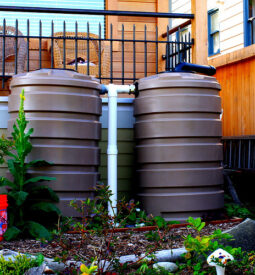
In addition to collecting pollution data, the Stormwater Work Group wanted a program that would help them do something useful with the results. They wanted to identify what land use and stormwater infrastructure management strategies and outreach approaches work best for recovering the health of local water ways. They needed resources for finding and stopping pollution sources.
They decided on a program with three components:
- Pollution monitoring in streams and nearshore waters in Puget Sound, including surveys of aquatic and marine life (this piece of the program goes by the name “status and trends monitoring”)
- Studies on the effectiveness of stormwater treatment strategies, public outreach, pollution control, and maintenance of stormwater infrastructure
- A database of illegal pollution dumping and information on how to identify pollutants and stop releases, called the Source Identification Information Repository (SIDIR)
“All three of these components will give us information we didn’t have before,” Dinicola said.
Permittees do have the option of fulfilling these requirements on their own, outside of the group. Pierce County, Bellingham, Redmond, and permittees in southwest Washington, for example, are doing their own monitoring programs and Tacoma is doing its own effectiveness work. These municipalities do not pay into the collective fund for these areas.
Testing the waters
Last August, the new stormwater permits with their monitoring requirements went into effect. The initial round of pollution monitoring will start January 2015 with the testing of 100 sites in Puget Sound area streams in urban and non-urban locations.
But first the group has hired US Geological Survey to physically visit 88 of the initial monitoring sites (12 are being tested by municipalities that are conducting this monitoring themselves) to make sure they are suitable locations.
The USGS project will cost $35,800 and the field work will start later this year.
Identifying what works
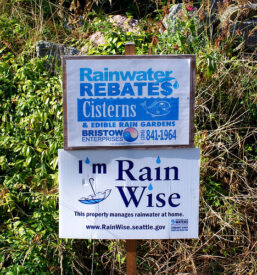
In 2011, the Stormwater Work Group conducted a review of research published on stormwater effectiveness in a variety of areas, from public education to the performance of green stormwater infrastructure.
They solicited suggestions for effectiveness research that was needed in the Northwest to fill in information gaps. They got more than 170 suggestions, which were whittled down to 22 topics and ideas.
This spring, they’re working to select projects to test effectiveness here in Puget Sound. The group has narrowed down its top ideas, which include how frequently stormwater catch basins need to be cleaned out to control pollution and how many green stormwater installations are needed in an area before they start providing a measurable benefit. At workshops in March and May the group will begin figuring out the next steps for answering these questions.
Targeting the source
It’s fine to measure the pollution that stormwater dumps into streams and marine waters, but it’s even better to prevent it from getting into the environment in the first place. A new database will help officials responding to spills identify the pollutant, take cleanup action if necessary, and stop it from occurring again.
It will help answer the question: “What do you do when you go into the field and see suds?” Dinicola said.
Cities and counties will fill out Illicit Discharge Detection and Elimination incident tracking forms that will be used to compile data on pollution spills around the region. Then as trends emerge, the group will look for solutions.
If it turns out, for example, that restaurants are dumping cooking-oil waste down their storm drains, Ecology might hold a class or provide outreach information to get them to curb the practice.
Tips from Washington’s monitoring effort
The Puget Sound Ecosystem Monitoring Program has a great goal of providing cost-effective, meaningful data on the best ways to protect local streams, lakes, and marine waters from the pollution and damage caused by stormwater runoff.
It’s a big mission and the project has followed a smart strategy for meeting its goals. Here are some key features of the program that could serve as a model for others:
Learn from others: The project kicked off by looking back at how other folks had tackled stormwater monitoring to see which features they did and didn’t like.
Listen and build consensus: Dinicola literally came to her first stakeholder meeting with a blank sheet of paper. She made clear that Ecology didn’t have an agenda for the program and truly wanted to build something with the stakeholders.
As much as possible, the group worked toward consensus when finalizing recommendations and plans. That meant revisiting issues over and over if necessary and in some cases eliminating detailed language that couldn’t be agreed upon.
Maintain independence: The monitoring program meets permit requirements from Ecology, but the group’s funding and leadership come from cities and counties.
Pool resources: To share resources and to make the pollution testing and research more cost-effective, comparable, and efficient, the municipalities are pooling their funds and contracting with outside agencies to do the work for most all of the studies.
“We can make a lot more progress working together,” Simmonds said. “There is a lot of potential there, but getting there is hard. It took us a lot of time and a lot of meetings.”
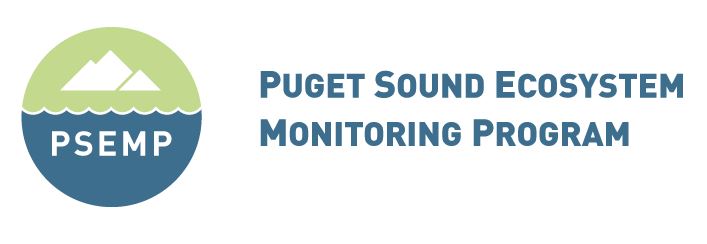

Comments are closed.